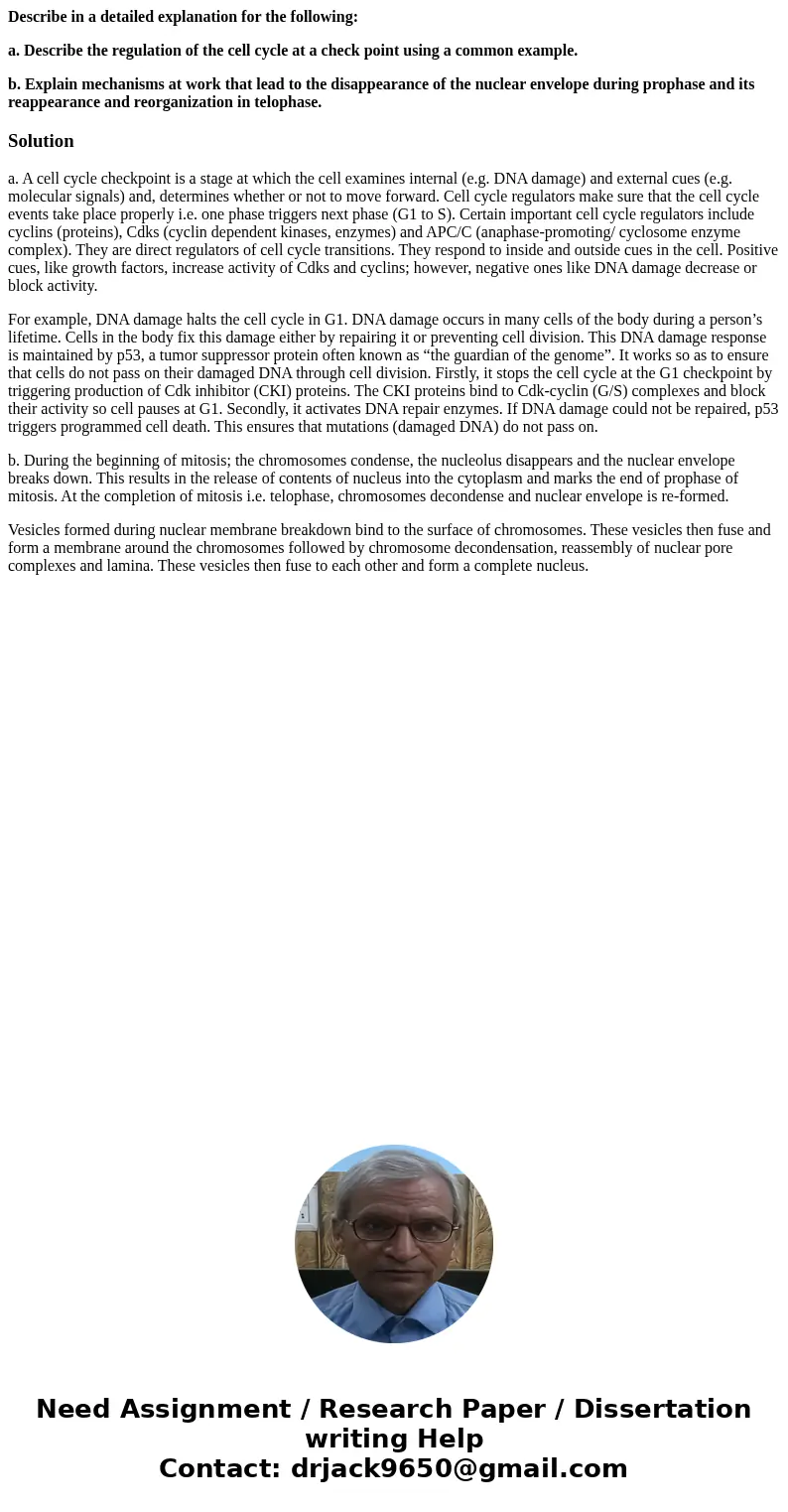Describe in a detailed explanation for the following a Descr
Describe in a detailed explanation for the following:
a. Describe the regulation of the cell cycle at a check point using a common example.
b. Explain mechanisms at work that lead to the disappearance of the nuclear envelope during prophase and its reappearance and reorganization in telophase.
Solution
a. A cell cycle checkpoint is a stage at which the cell examines internal (e.g. DNA damage) and external cues (e.g. molecular signals) and, determines whether or not to move forward. Cell cycle regulators make sure that the cell cycle events take place properly i.e. one phase triggers next phase (G1 to S). Certain important cell cycle regulators include cyclins (proteins), Cdks (cyclin dependent kinases, enzymes) and APC/C (anaphase-promoting/ cyclosome enzyme complex). They are direct regulators of cell cycle transitions. They respond to inside and outside cues in the cell. Positive cues, like growth factors, increase activity of Cdks and cyclins; however, negative ones like DNA damage decrease or block activity.
For example, DNA damage halts the cell cycle in G1. DNA damage occurs in many cells of the body during a person’s lifetime. Cells in the body fix this damage either by repairing it or preventing cell division. This DNA damage response is maintained by p53, a tumor suppressor protein often known as “the guardian of the genome”. It works so as to ensure that cells do not pass on their damaged DNA through cell division. Firstly, it stops the cell cycle at the G1 checkpoint by triggering production of Cdk inhibitor (CKI) proteins. The CKI proteins bind to Cdk-cyclin (G/S) complexes and block their activity so cell pauses at G1. Secondly, it activates DNA repair enzymes. If DNA damage could not be repaired, p53 triggers programmed cell death. This ensures that mutations (damaged DNA) do not pass on.
b. During the beginning of mitosis; the chromosomes condense, the nucleolus disappears and the nuclear envelope breaks down. This results in the release of contents of nucleus into the cytoplasm and marks the end of prophase of mitosis. At the completion of mitosis i.e. telophase, chromosomes decondense and nuclear envelope is re-formed.
Vesicles formed during nuclear membrane breakdown bind to the surface of chromosomes. These vesicles then fuse and form a membrane around the chromosomes followed by chromosome decondensation, reassembly of nuclear pore complexes and lamina. These vesicles then fuse to each other and form a complete nucleus.

 Homework Sourse
Homework Sourse